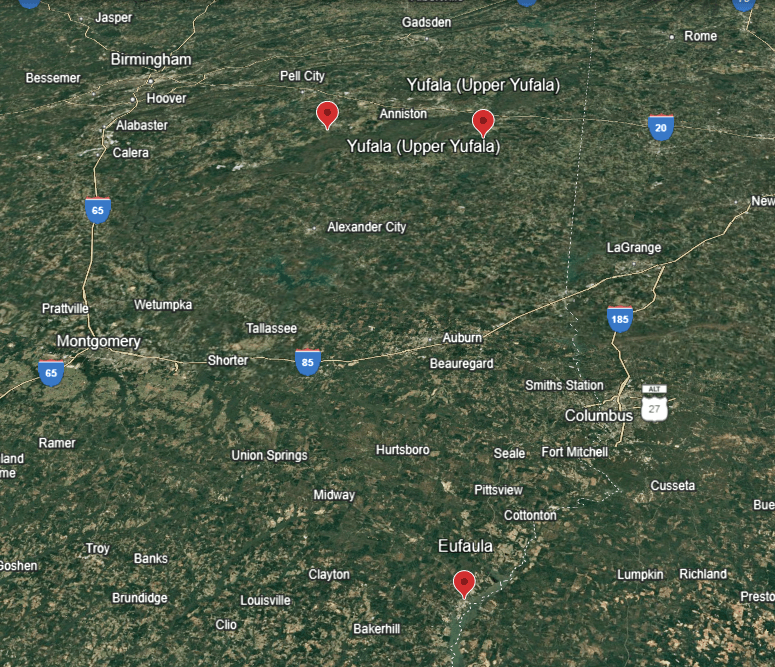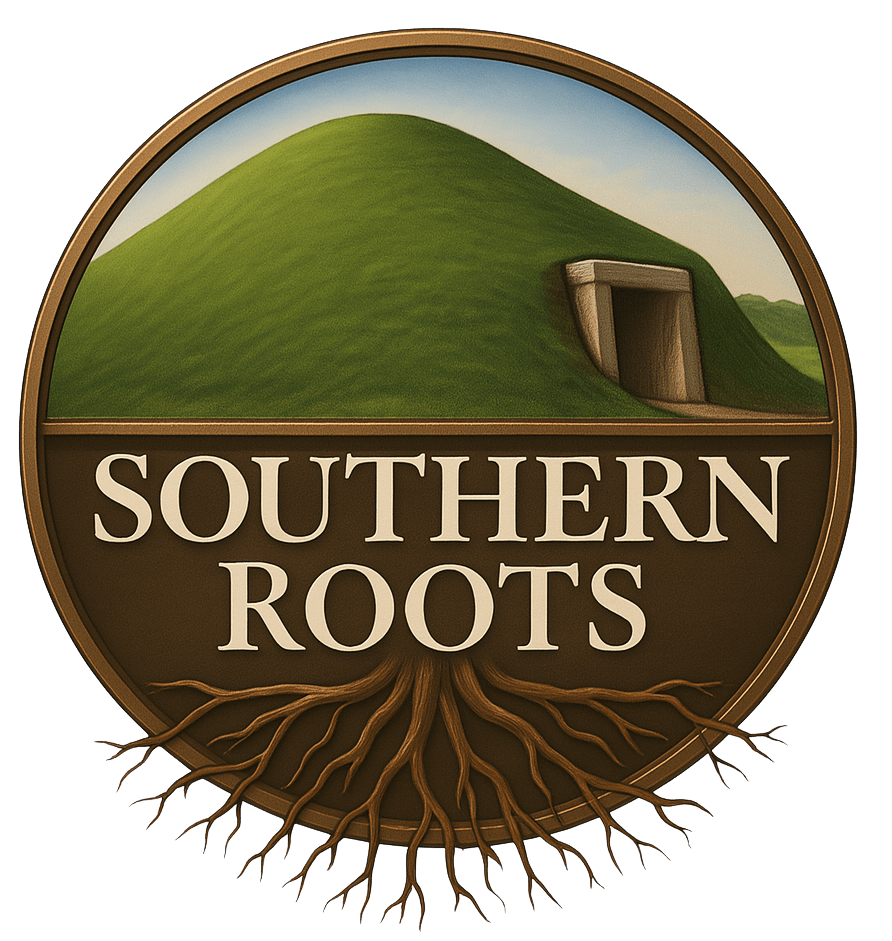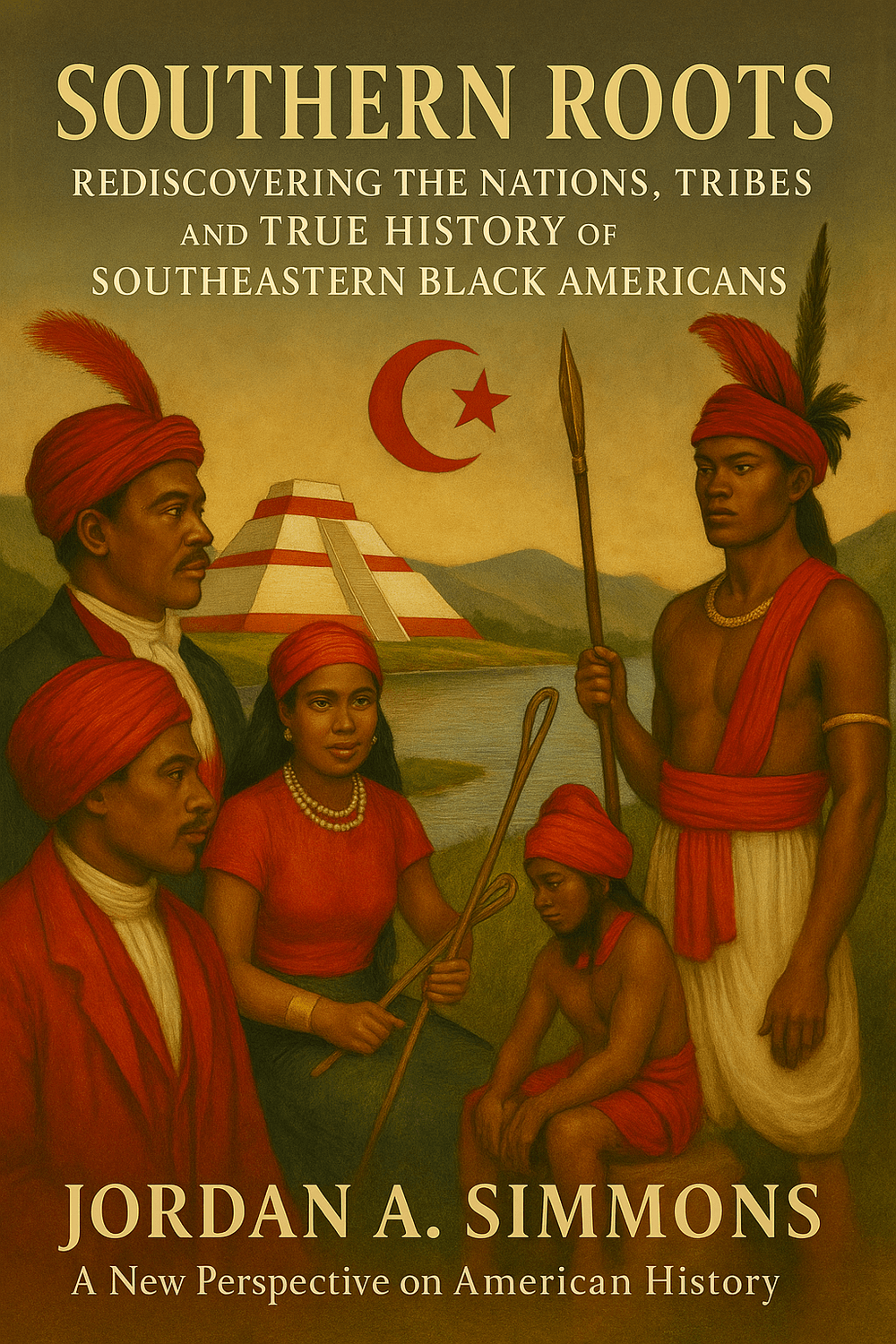Eufaula: The River-Spanning Nation
This article is part of our series “The Hidden Nations of the American South,” revealing the true town-nations behind today’s Southeastern Black Americans.
Eufaula—also recorded as Yufala—was more than a single settlement. It was a network of towns and villages strategically placed along the major rivers of the Southeast, binding together communities through trade, ceremony, and kinship.
A Town of Two Realms
The Eufaula people occupied both the Chattahoochee River and the Tallapoosa-Coosa river systems. This geographic spread created what historians often describe as “Upper” and “Lower” Eufaula towns:
Lower Eufaula towns were located along the Chattahoochee River, with the principal town near present-day Eufaula, Alabama, several miles below Kawita. Villages extended south into present-day Randolph County, Alabama, just below Rock Falls.
Upper Eufaula towns were located farther inland. One was on the west bank of the Tallapoosa River below Okfuski, and another stood in present-day Talladega County, Alabama, near Allison Mills Road—on the east bank of Talladega Creek (formerly Yufala Creek), a tributary of the Coosa River.
This dual presence gave Eufaula influence over two of the Southeast’s most important waterways.
Historical Records
John R. Swanton documented multiple Eufaula locations between 1760 and 1832, noting the town’s southeastward movement after appearing on De Crenay’s 1733 map. He recorded villages such as Big Ufala, Little Ufala, and Fu-fau-lau-hat-che near present-day Talladega, Alabama (Swanton, pp. 260–261).
In the 1790s, James Cussins and James Lesley described Upper Eufaula as “on the left bank of the river, on a pine flat… well behaved and very friendly to white people,” highlighting the town’s agricultural productivity and ceremonial structures.
Ceremonial Importance

Like other Muskogee towns, Eufaula followed the Italua model—a town as a living being, complete with council houses, ceremonial plazas, and sacred responsibilities. Its leaders participated in regional councils and maintained alliances through both diplomacy and intermarriage.
The location of Eufaula’s towns allowed them to serve as connectors between Upper and Lower dominions. This was a political advantage, enabling them to mediate disputes and participate in both trade and military campaigns.
Removal and Continuity
After the era of forced removal in the 19th century, many Eufaula people relocated westward. By the early 1800s, they appear in Oklahoma, still identifying as Eufaula. Their name survives today in towns, rivers, and counties across multiple states, preserving the memory of their river-based nation.
The continuity of the name—despite geographic displacement—speaks to the strength of Eufaula’s identity. Their towns may have moved, but the nation never ceased to exist in the hearts and memories of their descendants.
📚 This is part of the Southern Roots blog series revealing the true nations behind modern Southeastern identity.
👉 Explore the full history in Southern Roots: Rediscovering the Nations, Tribes, and True History of Southeastern Black Americans.
Let us know what you think in the comments!

